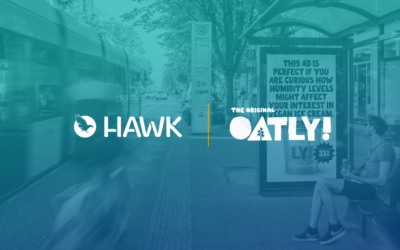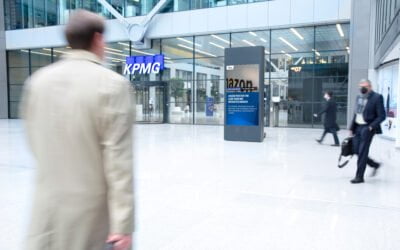Hawk Talks is our regular series in which we speak to industry experts about current themes and issues in their sector. This month, as UK consumers head back to the high street, and various studies point to the potential of a spending boom Shanil Chande, our head of agency sales talks to Jessica Chapplow, head of digital transformation at KR MediaCom (pictured), about luxury retail, the sector’s response to lockdown, and what this could spell for the future.
SC: The pandemic is a global issue but each country has responded differently. How do luxury brands handle regional discrepancies to ensure a marketing strategy that is both global, but also nuanced for each local market?
JC: ‘Think global act local’ has become a bit of a cliché, but with good reason – and it’s an approach that is as true for luxury as it is for any retailer. The global ‘big picture’ is the anchor for the overall brand, while the strategy for each region needs to take into account the specifics of that area, such as market conditions, audiences, cultures and previous activity.
In the UK for example, tourism has traditionally been a big deal for luxury retail, so the pandemic-enforced travel restrictions abruptly pulled the plug on a vast revenue stream for a lot of brands. As with many other sectors, survival became about adapting.
Luxury brands have had to re-evaluate their audiences to understand where the wealth lies at home. According to Knight Frank’s Wealth Report 2021, London has over 870,000 high net worth individuals; this is not entirely surprising in itself, but it reinforces the importance of targeting the local urban consumer (with relevant messaging that reflects the current situation as well as aims to drive performance, rather than brand awareness).
This has also had to play out against the backdrop of the beleaguered British high street; Debenhams for example, which, bar a post-lockdown final hurrah, closes for good this year, was a major outlet for the sale of luxury perfumes. Once again this brings home the need to adapt – exploring direct-to-consumer (DTC) for example – in a way that is sensitive to the needs of the region in question.
SC: Looking ahead, will luxury retail increase its online footprint? Or will it revert to offline as the pandemic subsides?
JC: The role of the physical store will be re-framed, most certainly, but we don’t yet know how. The key will be the ability to adapt quickly in line with the situation as it changes – and then changes again…
We could see offline stores becoming more mission-driven – to encourage impulse purchases when buyers collect online purchases, or as a channel to offer items as offline exclusives.
Two points are important to note here. First, the move online is not entirely pandemic-related – the luxury sector has made significant advances in recent years, to the extent that it’s not unknown for a flagship store to be a replica of the brand’s online presence.
And second, while it’s tempting to think that because they are digitally-native, challenger luxury brands have an advantage over their traditional counterparts, the latter can trade heavily on their hard-won heritage, longevity and reputation; they are perfectly positioned to elevate their e-commerce operations.
SC: Can super-smart technology help to recreate the experience of being in a high-end store with personalised customer service?
JC: The rules for luxury are currently being redrawn, and it’s true that tech is shaping these.
What is fascinating is the mix of ‘old’ and emerging technology that we’re seeing. Who would have predicted two or three years ago that QR codes (a technology dating from the nineties) would see a renaissance? Today, among other things, they are the vital link that bridges offline (print and out-of-home in particular) and online media channels. Beacons too, consigned to the sale rail some time ago, have new value; connecting beacon data with WhatsApp could advise consumers on queue-free times to visit a shop.
And while virtual try-one applications are coming to fruition, with video normalised by lockdown, the immediate solution could be live-streaming whereby customers at home can talk to in-store experts via a video-link to make an informed purchase. These options show that both low and high tech options have the capacity to reduce the costly issue of returns.
SC: Can technology also help luxury brands to appeal to a new wave of ‘tech savvy’ and affluent consumers?
JC: The new generation of aspirational luxury fans, combined with brands that are embracing their digital prowess, will continue to drive change, much of it tech-centred. For example, today we’re seeing collaborations between fashion houses and gaming platforms to launch new collections; this paves the catwalk for many more innovations in the months and years ahead.
Video games can offer freedom of expression in way that is both unique and resonates with luxury consumers. For example, most games allow players to choose the appearance and style of their characters – creating branding and storytelling opportunities for luxury brands that can weave digital products or accessories into the existing fabric of a popular game in an authentic way.
With almost 90% of Gen Z being gamers (Source: Kantar), these initiatives tap into wider consumer interests to make luxury more accessible and culturally relevant to a key audience. (A recent Mintel study revealed that 50% of Gen Z consumers in the UK have bought luxury goods in the past 18 months.)
Early adopters in this space have included, Louis Vuitton, Mercedes Benz and Hermes. More recently, Marc Jacobs and Valentino have created digital garments for Animal Crossing: New Horizons – one of the most popular games of the past year.
Gaming is a clever opportunity for luxury brands to showcase select products from their latest collections. Not only does it create additional brand connections, valuable insights, such as which pieces are the most popular, can be gleaned from player data.
SC: Finally, based on your extensive experience with luxury brands, how would you sum up what we might expect to see in the coming months?
JC: In times of chaos, consumers find comfort in personalised service and the connection, speed and ease it brings. E-commerce has seen 10 years of growth less than 12 months as a result of the events of 2020, and it is crucial for brands to know and anticipate what their customers expect from the online shopping experience.
As the world looks to emerge from the pandemic there is a lot of talk about retailers ‘pivoting’ to accommodate new behaviours. But the reality requires more of a pirouette, which, graceful and effortless to watch, requires a supreme amount of effort and hard work to execute! We can expect luxury brands to adopt and rapidly embed existing and new technologies into the customer journey. At the same time, this customer journey has evolved and brand marketers should transform their approach to content creation with an impactful narrative that meets the expectations of the luxury shopper of today and tomorrow.



